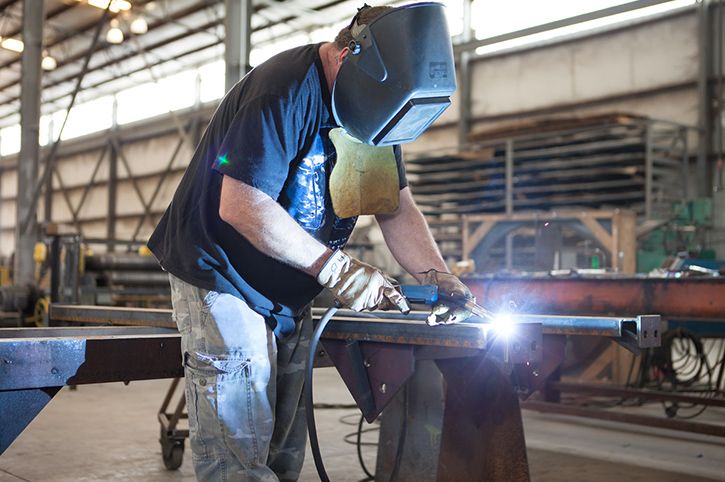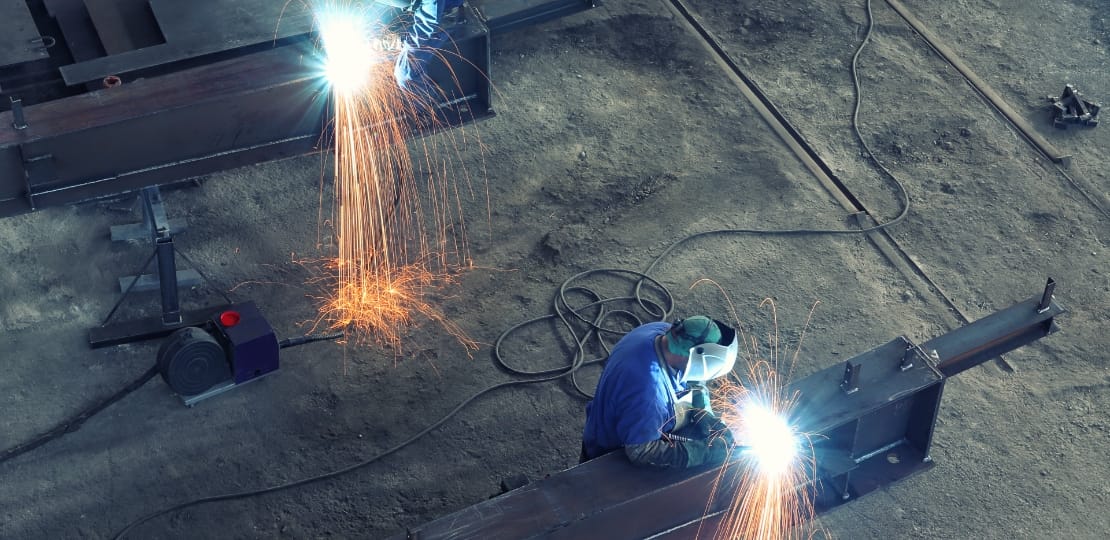Signs of weld failure and what Belgrade can do about them
Common Welding Repair Issues and Exactly How to Address Them Properly
Welding fixings typically experience a series of concerns that can endanger the honesty of the last product. Typical troubles consist of inadequate infiltration, porosity, and imbalance, among others. Each issue presents distinct challenges that require details approaches for resolution. Understanding these problems is vital for welders aiming to boost their outcomes and skills. This discussion will discover these common welding repair issues and effective approaches to resolve them.
Poor Infiltration
Poor infiltration happens when the weld steel fails to completely fuse with the base product, causing weak joints and possible architectural failings. This concern typically stems from insufficient heat input, wrong electrode angle, or incorrect welding speed. Welders may come across inadequate penetration because of a mistake of the necessary specifications for a details material thickness or type. In addition, contamination on the base material's surface area can prevent reliable bonding, intensifying the trouble. To attend to insufficient infiltration, welders must guarantee suitable settings on their equipment and keep a tidy work surface area. Regular evaluation of welds is suggested to recognize any kind of deficiencies early, permitting timely modifications and the avoidance of compromised structural stability in welded assemblies.
Porosity
Porosity is a typical issue in bonded joints that shows up as tiny gas bubbles trapped within the weld steel. This flaw can jeopardize the stability of the weld, bring about minimized toughness and potential failure under tension. Montana Mobile Welding and Repair Belgrade Fabrication. Porosity usually emerges from contamination, wetness, or incorrect welding methods, which permit gases to leave into the molten weld pool. To address porosity, welders ought to ensure appropriate surface area prep work, preserve a tidy working setting, and use ideal welding parameters. In addition, selecting the best filler product and protecting gas can reduce gas entrapment. Routine examination and testing of welds can aid identify porosity early, guaranteeing timely corrective activities are taken, thereby maintaining the high quality and integrity of the bonded framework
Imbalance
Misalignment in welding can occur from various aspects, including inappropriate arrangement and thermal growth. Understanding the source is vital for reliable resolution. Numerous modification methods are available to straighten parts and guarantee structural integrity.
Reasons of Imbalance
Welding imbalance typically comes from a range of underlying concerns that can endanger structural honesty. One main cause is incorrect fit-up of components before welding, which can cause voids and uneven surfaces. Variations in thermal expansion during the welding process can also cause distortion, especially if the materials being joined have various coefficients of expansion. Additionally, inadequate fixturing and securing may stop working to hold components securely in place, bring about motion throughout welding. Badly kept equipment, consisting of welding devices and devices, might introduce incongruities in the weld bead, further contributing to imbalance. Operator error, stemming from inadequate training or experience, can additionally play a considerable duty in creating misaligned welds.

Improvement Techniques Readily Available
Resolving misalignment successfully calls for a mix of restorative methods customized to the details concerns at hand. One usual method is the use of jigs or fixtures to hold parts in the right position throughout welding, guaranteeing consistent alignment. In addition, preheating the materials can help lower distortion and improve fit-up. For considerable misalignment, mechanical adjustment methods, such as making use of hydraulic jacks or clamps, can be employed to remedy the position prior to welding. Post-weld heat therapy might likewise be required to relieve anxieties brought on by imbalance. Cautious examination and adjustment throughout the arrangement stage can avoid imbalance issues from coming to be significant problems, promoting a smoother welding process and improving general architectural integrity.
Distortion
Distortion is an usual difficulty in welding that can develop from numerous aspects, consisting of unequal heating & cooling. Comprehending the sources of distortion is vital for carrying out effective prevention strategies. Resolving this concern not just improves structural integrity but additionally improves the total quality of the weld.
Reasons for Distortion
When subjected to the intense heat of welding, products commonly go through adjustments that can result in distortion. This sensation mostly emerges from thermal development and tightening during the welding procedure. As the weld location heats up, the material broadens; upon air conditioning, it acquires, which can produce interior anxieties. Additionally, uneven heating throughout a work surface can worsen these tensions, resulting in bending or bending. The type of material also plays a considerable function; steels with differing thermal conductivity and coefficients of growth might react in a different way, bring about uncertain distortions. In addition, poor joint layout and insufficient fixturing can add to imbalance throughout welding, boosting the likelihood of distortion. Understanding these causes is important for effective welding fixing and prevention methods.
Prevention Techniques
Effective prevention techniques for distortion throughout welding concentrate on controlling warm input and making sure appropriate joint style. Maintaining a consistent warmth input assists to decrease thermal growth and tightening, which can lead to distortion. Utilizing strategies such as preheating the workpiece can also lower the temperature slope, promoting uniform home heating. In addition, selecting suitable joint layouts, such as T-joints or lap joints, can improve stability and decrease tension focus. Executing appropriate fixturing to secure the workpieces in location further aids in preserving positioning throughout the welding process. Staggered welding sequences can disperse warmth a lot more evenly, preventing localized distortion. By applying these approaches, welders can considerably lower the chance of distortion and boost the general high quality of their welds.
Cracking
Cracking is a typical issue experienced in welding repair work, often resulting from numerous elements such as inappropriate air conditioning rates, product selection, or poor joint preparation. The incident of fractures can substantially jeopardize the stability of the weld, resulting in possible failings during operation. To address this problem, welders need to first assess the source, making sure that materials work and appropriately selected for the certain application. Furthermore, managing the air conditioning rate throughout the welding process is crucial; quick cooling try this web-site can generate stress and anxiety and lead to breaking. Proper joint style and prep work likewise contribute to minimizing the danger. Carrying out these techniques can improve weld high quality and toughness, ultimately decreasing the likelihood of cracking in completed weldments.

Insufficient Fusion
A significant problem in welding repairs is insufficient combination, which takes place when the weld steel does not properly bond with the base product or previous weld passes - Montana Mobile Welding and Repair Belgrade. This flaw can lead to weak points in the joint, potentially endangering the honesty of the bonded structure. Factors adding to incomplete fusion include inadequate warmth input, improper welding strategy, and contamination of the surfaces being joined. To address this concern successfully, welders should assure appropriate pre-weld cleansing and surface area prep work, as well as readjust their welding specifications to achieve appropriate infiltration and fusion. Routine assessment during the welding process can additionally assist determine incomplete blend early, permitting timely corrective steps to boost the overall high quality of the weld
Overheating
While welding repair services can boost architectural honesty, overheating offers a significant obstacle that can result in product destruction. Excessive heat throughout welding can change the mechanical homes of steels, leading to decreased toughness, raised brittleness, and bending. This phenomenon is specifically vital in high-stress applications where structural reliability is vital. Determining overheating can entail aesthetic examinations for staining or distortion, in addition to checking temperature during the welding procedure. To alleviate the threats connected with getting too hot, welders should utilize ideal techniques, such as controlling heat input, adjusting travel speed, and using appropriate filler materials. In addition, executing pre- and post-weld warmth therapies can help bring back product buildings and boost the general top quality of the repair, making sure long-lasting performance and safety and security.
Often Asked Inquiries
What Are the Typical Indications of a Welding Problem?

Exactly How Can I Test My Welds for Top quality?
To check welds for top quality, one can make use of visual evaluations, ultrasonic screening, and radiographic techniques. Each technique ensures structural integrity, identifies problems, and confirms adherence to defined criteria, eventually improving the dependability of the welded joints.
What Security Precautions Should I Take While Welding?
When welding, one ought to prioritize safety by putting on proper personal safety devices, making sure appropriate air flow, safeguarding flammable products away, keeping a clean office, and recognizing surroundings to stop accidents and injuries.
Can I Fix a Weld Without Remodeling the Entire Joint?
Repairing a weld without redesigning the entire joint is feasible, depending on the damage (Montana Mobile Welding and Repair Welding). Strategies such as grinding, including filler product, or using a welding process can effectively address certain imperfections while protecting the bordering structure
What Devices Are Necessary for Effective Welding Fixes?
Important devices for effective welding repair services consist of a welding equipment, cord brush, grinder, protective equipment, clamps, and filler products. Each device plays a vital role in ensuring quality and safety and security throughout the repair process. Porosity typically emerges from contamination, dampness, or incorrect welding methods, which allow gases to get away into the liquified weld pool. Badly kept equipment, consisting of welding machines and tools, might introduce variances in the weld bead, try these out further contributing to imbalance. When subjected to the intense warm of welding, products typically undergo adjustments that can lead to distortion. Splitting is a typical issue run into in welding repair services, frequently resulting from numerous aspects such as inappropriate cooling rates, material selection, or inadequate joint prep work. A significant issue in welding repair services is insufficient combination, which occurs when the weld steel does not sufficiently bond with the base material or previous weld passes.